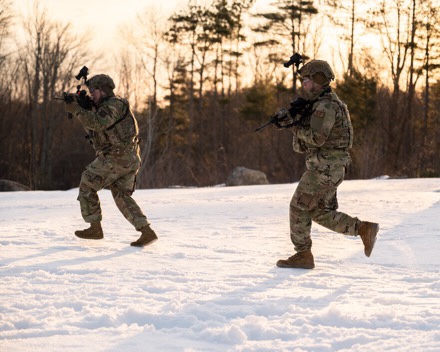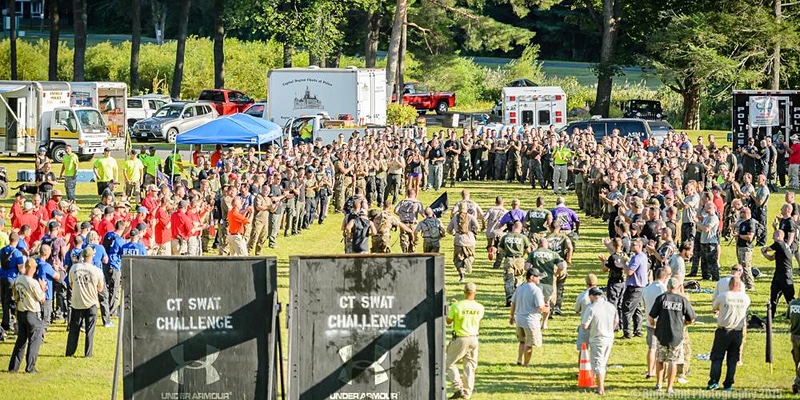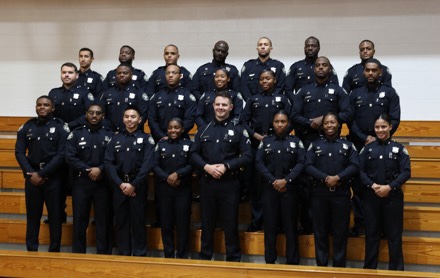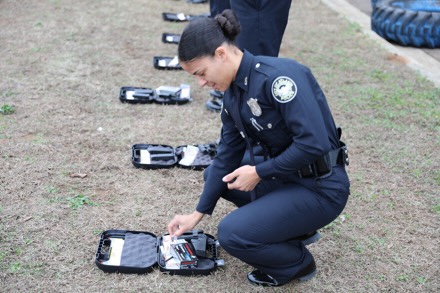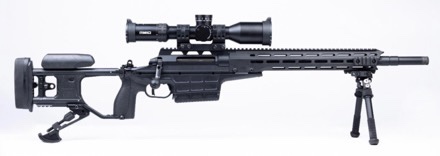Who picks your duty ammunition? The short answer is YOU. You should at least have a say in what your department or range staff chooses. You will be the one carrying the ammunition for either self-defense or in defense of others. This article will highlight the major components of the right ammunition and what you should look for when choosing your duty ammo.
There’s a lot that goes into selecting duty ammunition: performance, penetration, accuracy, wound cavity, cost, and even politics. To be honest, most officers probably don’t pay attention to all of them, I know I didn’t when I first started. My goal is to give you the details you need to make an informed decision so you can have the confidence that if the trigger must be pulled, you can be damn sure the ammunition coming out of the muzzle is going to do its job.
After sitting on the other side of the rounds for 25 years as a Police Officer in California, I think I’ve earned a seat at the table for this discussion. Now I offer my expertise as a member of the G9 Defense team where we develop, test and manufacture very specialized ammunition specifically engineered to provide lethal and accurate defense for highly concentrated human environments. Pull up a chair and let’s get into it. Don’t take your department or range staff’s word for it—here’s your due diligence.
I may be dating myself here, but when I began my law enforcement career back in 1992, I only had one choice for duty ammunition. Upon graduating from the academy, the police department issued .38 caliber Smith and Wesson revolvers plus 18 rounds to new recruits—I know, crazy right? The department was always budget conscious if you know what I mean. Semi-automatics were just starting to become popular with our department, but they were costly to purchase. If you wanted to carry a semi-auto, you had to buy your own duty weapon and ammunition, then take an eight-hour transition course to get signed off by the range staff. After taking the course, I picked my duty ammunition from the pre-approved list provided by management and loaded up my magazines. I never really gave too much thought about the projectile’s performance, ballistics, or cost. I trusted the range staff that tested and evaluated the ammunition we were going to use. I had to put into practice what I learned from the academy and use that knowledge in real world scenarios as a police officer where every trigger pull could save or take a life.
As I moved through my law enforcement career, going from Field Training Officer (seven years), Tactical Flight Officer and Pilot (four years) and then a K-9 Officer (fourteen years), I still never really investigated ammunition performance. Thinking back now I tell myself, shame on me. I should have pushed back a little to influence arguably the most important equipment in my daily carry. Simply, I always trusted the range staff that was doing the testing and evaluating of duty ammunition to have the best ammunition selected. At that time, the industry standard was using hollow points. All the big manufacturers were making them and for the most part, they worked. One thing you need to remember is that ammunition has not drastically changed since WWII. The design and concept have remained pretty much the same. Kind of like that adage “If it ain’t broke, don’t fix it.” So why consider new or different ammunition? Well, just like with most things, technology changes, new ideas come out, and maybe those advancements can have a substantial impact on your job and safety.
So, what should you consider when evaluating your choice of ammunition?
Performance
One of the first things I’d encourage you to consider when evaluating which ammunition to use is performance. How does your ammunition actually work? G9 Defense is a fairly new ammunition company with an innovative design in bullet technology and have most duty calibers readily available with the EHP (External Hollow Point) design. Let’s look at the G9 Defense 9 mm 80 grain EHP for example:
• muzzle velocity of 1480 fps
• design has a controlled penetration based on fluid dynamics
• the projectile is made of solid copper with three angled parabolic flutes
• projectile will stop at approximately 18 inches of depth in 10% ordnance gel with or without barriers
• EHP projectile does not need to expand for terminal effect like traditional hollow points
• 100% reliability in contrast to traditional hollow points
With G9’s improved barrier penetration, high velocity, and the low frontal surface area allows the projectile to penetrate barriers, such as windshields, with very limited deflection or deformation while remaining on target, which leads me to the next topic, penetration.
Penetration
G9’s 9 mm EHP design will not over penetrate on the target like a traditional hollow point if the round fails to deform or open. Traditional hollow points need to expand or “open up” for maximum effect. If the hollow point gets clogged with some sort of barrier or clothing, it basically becomes a Full Metal Jacket (FMJ), and over penetrates. In most reports I’ve read, traditional hollow points fail to deform or open 30% of the time and over 50% of the time when encountering domestic, soft, or hard armor. Don’t take my word for it, there are several third-party reports and tests for you to review and decide for yourself.
• G9 Defense’s Website
• Defensive Handgun Ammunition Characteristics and Bullet Types 2022 report conducted by Viper Weapons
• .308 APX Steel Tip Through Windshield
• 136 gr 308 Armor Penetrating Round
• 9mm 77 gr Armor Penetrating Cavitator in Level 3-A Armor
• Kimble County, Texas Sheriff’s Office
Wound Cavity
The design of the G9 Defense EHP enables maximum wound cavities. With the shape of the parabolic flutes, it uses Solid Metal Fluid Transfer (SMFT) to move blood, tissue, and organs out away from the projectiles path at a high velocity. Think about a boat propeller in the water, as the propeller spins it pushes the water out away from physical propeller and uses that force to move the boat. In short, it takes the kinetic energy from the projectile and transfers it to the target causing a wider wound channel. If you could stop a threat with less rounds, would you? Being more effective with your ammunition is better than overcompensation for poor performance. View our gel block photos here. In the photos you can see that the G9 projectiles all stop around eighteen inches of penetration and don’t deviate through armor or other mediums while wreaking havoc on its acquired threat.
Accuracy
This comes down to practice, practice, practice. I can’t over state this enough. You need to keep up on your training and drills with your weapon system. Train with the ammunition that you are going to carry. I know some of you are going to say, “Why would I use duty ammunition when I can just use ball ammunition and get the same training? It will cost me too much money to train all the time.” You need to train like you fight. Make sure the ammunition you use will feed and cycle through your handgun. Trust in your ammunition comes with time and that time covers hundreds of trigger pulls. You need to be accurate with the duty ammunition that you carry. Create that muscle memory so when or if you get into that situation when you need to fire your weapon, it becomes a natural movement. Train on failures with your weapon so you know what they feel like and how to clear them quickly. Enhance your time on the range and don’t be afraid to ask someone for pointers if you’re not proficient with your handgun or rifle skills. Get with someone who can teach enhanced shooting techniques.
Cost
You’ve probably heard it said before, but you can’t put a price on your life. If your department is unwilling to accommodate higher quality ammunition for the sake of your safety and effectiveness, it may be worth investing in yourself. You can find more information on the cost of our patented ammunition on our website.
Politics
Lastly, there are a few questions that need to be looked at from a management perspective. If you are in management or plan to present this information to your management, numbers are the most important thing. The more numbers the better.
• How many Officer Involved Shootings are my officers getting involved in on average in a year?
• What is the hit vs. miss percentage?
• Are the suspects starting to wear body armor?
If you knew your standard hollow point ammunition has up to a 50% failure rate when passing through a hardened media, why are you still issuing it? This is something the range staff and management should have a conversation about at least a couple of times a year. Police work has a very fluid dynamic to it that constantly evolves and changes. The evolution is something we have all seen over the last few years. Police work is not the same as it was when I was working. Over the last several years, you can see how the political environment has played a major part in police work, and likely duty ammunition selection. I could probably write another article on the political impact of modern policing, but I am not sure my blood pressure could handle it.
Like I said at the beginning, it is up to you to decide or at least have input into what you carry on duty. The next time you go to the range, talk to the range staff about their selection process for duty ammunition. Do they evaluate performance, penetration, and wound cavity? See if there is a committee made up of different ranks within the department. Ask to be a part of how ammunition is selected for duty. Do your research and have information in your back pocket to back up your opinion. Look at third party reports and videos. If you’re able get a few buddies together and buy some different ammunition, go test it yourself. It doesn’t have to be a huge scientific experiment but look at those points I mentioned above. How does your ammunition stack up when it comes to performance, penetration, wound cavity, and accuracy. Shoot some different types of mediums, like clothing, lightweight and heavy jackets, drywall, and plywood. Ask the range staff about how they test through automobile glass. Your life is on the line—help select the best ammunition available to keep you in the fight another day.
Written by Retired Police Officer, Michael Wooldridge
Long Beach Police Department, Long Beach, CA
